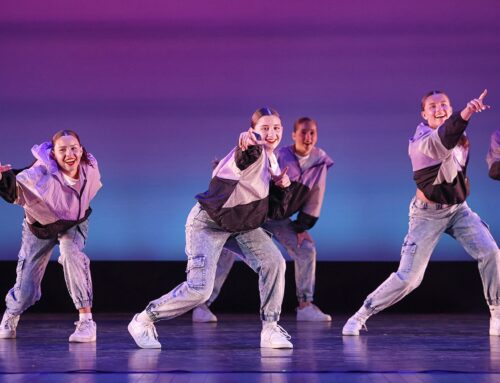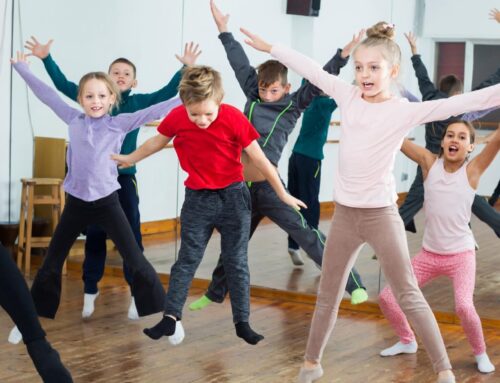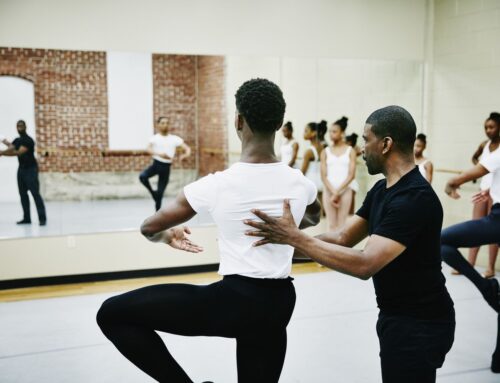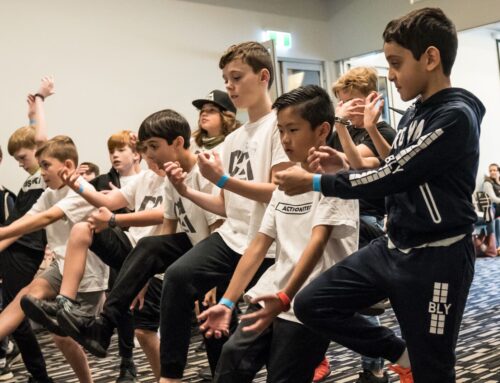Many teenagers believe they’ve missed their opportunity to begin ballet training, thinking that serious dance education must start in early childhood. However, this misconception prevents countless young people from discovering the transformative power of movement and artistic expression. While dance classes for kids often begin at very young ages, ballet offers equally valuable benefits for teenagers who are just beginning their dance education. Adolescence offers unique advantages for learning ballet, including enhanced physical coordination, emotional maturity, and more focused attention spans. This guide examines why starting ballet as a teenager can be both rewarding and practical, addressing common concerns while highlighting the many benefits awaiting new dancers.
Benefits of Starting Ballet as a Teen
Beginning ballet during the teenage years offers distinct advantages that younger children may not possess. Teenagers typically have better body awareness and can understand complex movement concepts more readily than their younger counterparts. This cognitive development allows teen dancers to grasp intricate ballet techniques and apply corrections more effectively.
Physical development during adolescence provides a strong foundation for ballet training. Teenagers have developed sufficient muscle strength and coordination to handle the demands of ballet technique safely. Their longer limbs and increased body control allow for more expressive movement and cleaner execution of challenging steps.
Mental maturity helps teenage dancers approach training with focus and determination. Unlike younger children who may struggle with attention spans, teens can concentrate during longer classes and retain detailed technical information. This mental capacity significantly accelerates their learning process.
Emotional depth enhances artistic expression as teenagers draw from their expanding life experiences to convey meaning through movement. Their growing self-awareness enables them to connect with music and choreography on a deeper level, resulting in more compelling performances.
Ballet training develops discipline and time management skills that benefit teenagers in all areas of life. The structured nature of ballet classes teaches goal-setting, persistence, and attention to detail—qualities that transfer to academic and personal pursuits.
Debunking the Myth of Age Limits
The belief that ballet dancers must start training in early childhood represents one of dance’s most persistent misconceptions. While professional ballet companies often prefer dancers with extensive early training, many successful performers began their serious studies during their teenage years.
Historical examples demonstrate that late starters can achieve remarkable success in ballet. Several principal dancers at major companies began intensive training in their teens, demonstrating that talent, dedication, and proper instruction are more important than the age at which one starts.
Modern ballet education has evolved to accommodate dancers of all ages and backgrounds. Teaching methods now address the specific needs of older beginners, offering age-appropriate progressions that build skills efficiently without overwhelming students.
Physical advantages can favor older beginners in certain aspects of ballet training. Teenagers possess greater strength and coordination than young children, allowing them to execute challenging movements more safely and effectively from the start.
The dance world increasingly values diverse backgrounds and experiences, recognizing that dancers who begin later often bring unique perspectives and life experiences that enrich their artistry and performance quality.
Overcoming Challenges and Self-Doubt
Starting ballet as a teenager presents unique psychological challenges that require specific strategies to overcome. Comparing oneself to younger dancers who have trained for years can create discouragement, but this comparison overlooks the different strengths that teen beginners bring to their training.
Self-consciousness about body image and coordination affects many teenage dancers initially. However, ballet training improves body confidence as students develop strength, flexibility, and grace. The supportive environment of quality ballet studios helps students focus on personal progress rather than external judgments.
A fear of looking awkward or uncoordinated prevents many teenagers from trying ballet. Remember that every dancer, regardless of when they started, experienced beginner challenges. Instructors understand this learning process and create supportive environments for students at all levels of learning.
Peer pressure and social expectations may discourage teenagers from pursuing ballet, especially if their friends don’t share similar interests. Finding a community of like-minded dancers helps combat these external pressures and motivates continued growth.
Setting realistic expectations helps teen dancers avoid frustration and maintain motivation. Progress in ballet requires patience and consistent effort, but the rewards of improved strength, flexibility, and artistic expression make the journey worthwhile.
Finding the Right Ballet Class
Selecting an appropriate ballet class significantly impacts a teenager’s initial experience and long-term success. Research local studios and instructors to find programs specifically designed for teen beginners rather than children’s classes that may not address age-appropriate needs.
- Class Level: Look for beginner or foundation classes that teach basic techniques without assuming prior knowledge
- Teaching Style: Seek instructors who provide clear explanations, patient corrections, and positive encouragement for older beginners
- Class Size: Consider smaller classes that allow for more individual attention and personalized feedback
- Class Atmosphere: Choose supportive environments that welcome dancers of all ages and backgrounds without judgment
Visit potential studios to observe classes and meet instructors before making a commitment. Ask about their experience teaching teenage beginners and their approach to age-appropriate instruction. Many studios offer trial classes that allow students to experience the teaching style and class atmosphere firsthand.
Tips for Starting Your Ballet Journey
Beginning ballet training requires realistic expectations and strategic approaches to maximize learning and enjoyment. Attend classes regularly, as consistency builds muscle memory and technical understanding more effectively than sporadic participation.
Focus on foundational elements, such as posture, basic positions, and simple movements, before attempting advanced techniques. Mastering these fundamentals establishes a solid foundation for future progress and prevents the development of poor habits that can be difficult to correct later.
Supplement class instruction with home practice, but limit this to exercises specifically taught in class to prevent the development of incorrect techniques. Use mirrors to check alignment and positioning while practicing basic barre work and center combinations.
Maintain realistic timelines for progress, understanding that ballet technique develops gradually through consistent practice. Celebrate small improvements rather than expecting dramatic changes immediately, as this mindset supports long-term motivation and enjoyment.
Connect with fellow dancers to build friendships and support networks within the ballet community. These relationships are encouraged during challenging periods and enhance the overall experience of learning this beautiful art form.
Related Topics:
- 5 Tips for a Great First Dance Class Experience: A Beginner’s Guide
- Why Dance Is More Than Just Movement: the Life Skills Your Child Will Learn




